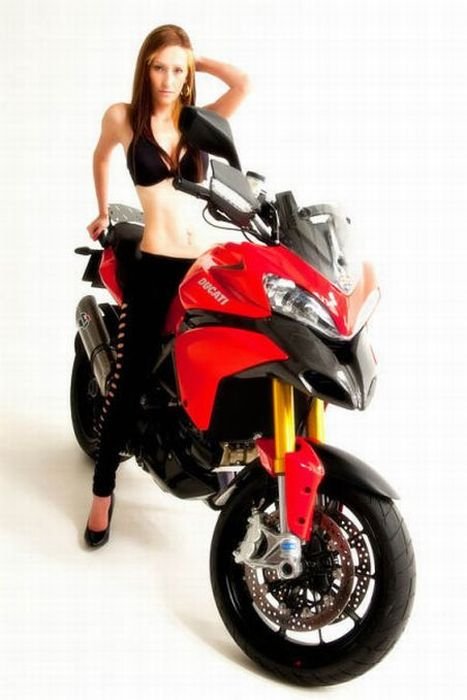Moto GP Girls
|
MotoGP, the premier class of GP motorcycle racing, has changed dramatically in recent years. From the mid-1970s through 2001, the top class of GP racing allowed 500cc with a maximum of 4 cylinders, regardless of whether the engine was a two-stroke or four-stroke. Consequently, all machines were two-strokes, due to the greater power output for a given engine capacity. Some two- and three-cylinder two-stroke 500s were seen, but though they had a minimum-weight advantage under the rules, typically attained higher corner speed and could qualify well, they lacked the power of the four-cylinder machines. In 2002, rule changes were introduced to facilitate the phasing out of the two strokes, probably influenced by what was then seen as a lack of relevance: the last mass-produced 500cc 2-stroke model had not been available to the public for some 15 years. The rules permitted manufacturers to choose between running two-strokes engines (500cc or less) or four-strokes (990cc or less). Manufacturers were also permitted to employ their choice of engine configuration. Despite the significantly increased costs involved in running the new four-stroke machinery, given their extra 490cc capacity advantage, the four-strokes were soon able to dominate their two-stroke rivals. As a result, by 2003 no two-stroke machines remained in the MotoGP field. The 125cc and 250cc classes still consist exclusively of two-stroke machines. In 2007, the MotoGP class had its maximum engine displacement capacity reduced to 800cc for a minimum of 5 years. For the 2012 season the capacity will be increased again to 1000cc.
The 2008 racing calendar consisted of 18 rounds in 16 different countries (Spain which hosted 3 rounds, Qatar, Turkey, China, France, Italy, Great Britain, the Netherlands, Germany, Czech Republic, San Marino, Portugal, Japan, Australia and Malaysia). Exclusive to the MotoGP class, there was also a USA round at Mazda Raceway Laguna Seca in Monterey, California for the 800cc class only, this is because the paddock is not large enough to also include the other 2 classes. In 2008 a MotoGP event was held at the Indianapolis Motor Speedway for the first time on a newly prepared track, and observers noted that the Speedway had hosted motorcycle racing before cars raced there. All three classes were scheduled to race but severe wind and rain prevented the 250cc class from racing. MotoGP racing at Indianapolis is counterclockwise, with a new Snake Pit complex past the start-finish line before heading down the Turn 1 short chute and into the infield section.
The grid is composed of three columns (four for the 125cc and 250cc classes) and contains approximately 20 riders. Grid positions are decided in descending order of qualifying speed, the fastest on the 'pole' or first position. Races last approximately 45 minutes, each race a sprint from start to finish without pitting for fuel or tyres.
In 2005, a flag-to-flag rule for MotoGP was introduced. Previously, if a race started dry and rain fell, riders or officials could red-flag (stop) the race and either restart or resume on 'wet' tyres. Now, if rain falls a white flag is shown, indicating that riders can pit to swap the motorcycle on which they started the race for an identical one, as long as the tyres are different (that is, intermediates instead of wets, or slicks instead of wets). Besides different tyres, the wet-weather bikes have steel brake rotors and different brake pads instead of the carbon discs and pads used on the 'dry' bikes. This is because the carbon brakes need to be very hot to function properly, and the water cools them too much. The suspension is also 'softened' up somewhat for the wet weather.
|
|









